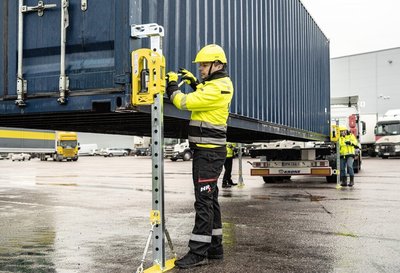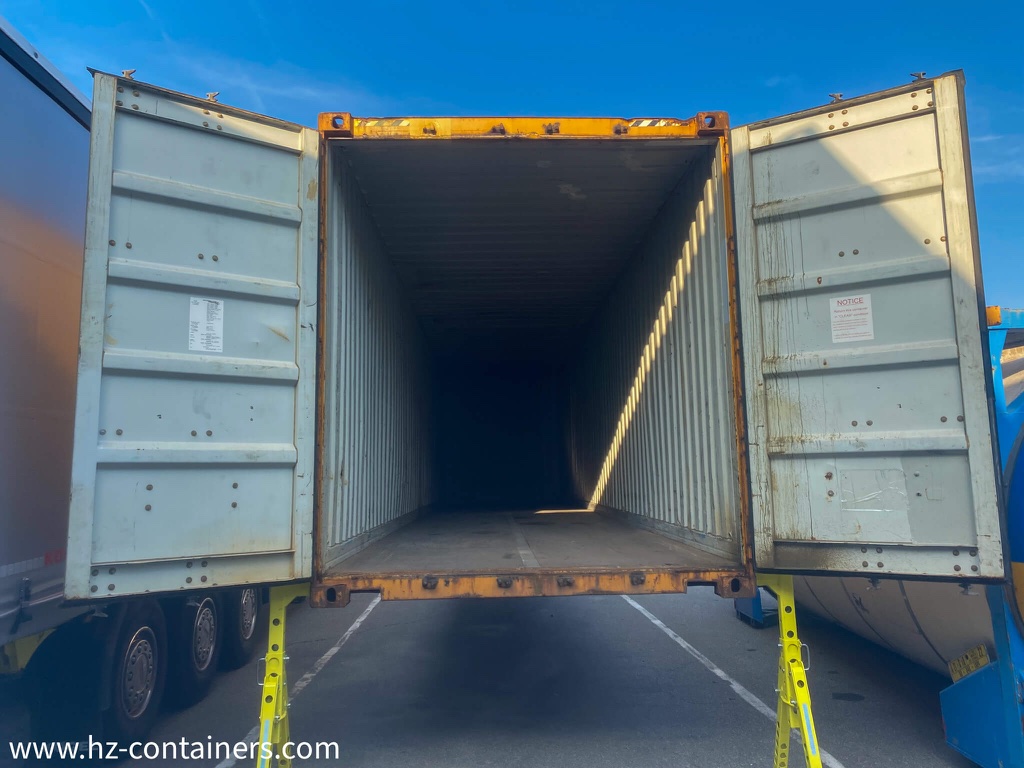What is the ConFoot CFP Set?
The ConFoot CFP set is a practical and efficient solution created to simplify container handling. It consists of lightweight yet durable legs that can be easily attached to shipping containers, allowing them to stand independently without needing additional support like a chassis. This is especially helpful in areas where permanent infrastructure is unavailable, making loading and unloading operations more accessible.
Proper installation of the CFP set is crucial to ensure it works effectively and safely. Incorrect mounting can lead to misaligned containers, inefficiencies, or even safety risks. This guide offers a detailed step-by-step process to help users install the CFP set correctly while maintaining safety standards.
Tools and Components Overview
Detailed Breakdown of CFP Set Components
The ConFoot CFP set is made up of the following key components:
- CFP Legs: These legs are the main support structures. Made of high-strength aluminum, they are strong yet easy to handle.
- Corner Castings: These are the specific points on a container where the CFP legs are attached.
- Height Adjustment Mechanism: This allows the legs to adapt to different ground levels or loading bay heights.
- Locking Pins and Safety Clips: These ensure the legs stay securely in place during use.
Required Tools for Installation
Before installation, gather the following tools to ensure a smooth process:
- A wrench or spanner to tighten bolts and locking pins.
- A level to confirm even height adjustments.
- Safety gloves to protect your hands while handling parts.
- A checklist to make sure all necessary components are present.
Having the right tools and understanding the components involved will make the installation process straightforward and help avoid potential mistakes.
Understanding the Mounting Procedure
Fitting CFP Legs into Specific Corner Castings
The CFP legs must be attached to the container’s designated corner castings. These castings are designed to bear the container’s weight and provide stability. Ensuring proper alignment between the legs and the castings is critical for safe and efficient use.
Identifying CF and CFP Leg Positions
During installation, it’s important to distinguish between CF and CFP legs. CF legs are fitted to the front corners of the container, while CFP legs are installed at the rear. This ensures balanced support and stability for the container.
Step-by-Step Installation Guide
Preparing the Chassis and Container
- Start by placing the container on a flat, stable surface to prevent unintended movement during installation.
- If the container is mounted on a truck chassis, ensure it is securely fastened to prevent shifting.
- Inspect the corner castings for any signs of damage or debris. Clean them if necessary to ensure a proper fit for the CFP legs.
Installing CFP Legs in Extended Positions
- Extend the CFP legs to the required height before attaching them to the container.
- Align each leg with its corresponding corner casting, ensuring the leg fits snugly into the slot.
- Secure the legs using locking pins and apply the safety clips to prevent accidental loosening. Double-check that everything is tightly fastened and secure.
Adjusting Height for Loading Bay Compatibility
- Once all legs are installed, use the height adjustment feature to raise or lower the container as needed.
- Use a level to confirm the container is evenly aligned. Uneven adjustments can compromise stability and make operations difficult.
- Make small adjustments as needed to ensure the container aligns with the loading bay or ground surface.
Safety Tips and Best Practices
Ensuring All Legs Are Securely Installed
Always verify that each leg is firmly attached to the corner casting. Loose or improperly installed legs can result in instability and pose safety risks.
Maintaining Even Height Adjustments
Uneven legs can cause the container to tilt, increasing the risk of accidents during loading or unloading. Check alignment frequently with a level and make adjustments as needed.
Additional Safety Considerations
- Regularly inspect the CFP legs and other components for signs of wear or damage. Replace any faulty parts immediately.
- Follow the manufacturer’s weight capacity and installation instructions to avoid overloading or improper use.
- Clear the work area of any obstacles before starting the installation process.
Troubleshooting Common Issues
Addressing Alignment Problems
If a leg does not align properly with the corner casting, check for any debris or damage in the casting slot. Make sure the leg is fully extended and correctly positioned before attempting to attach it.
Handling Damaged or Faulty Components
Do not use damaged CFP legs or corner castings, as they can compromise the stability and safety of the setup. Inspect all components before installation, and replace any damaged parts with new ones to avoid further issues.
Adjusting for Uneven Surfaces
When working on uneven ground, use the height adjustment mechanism to level the container. Test the stability by gently pressing on each corner to ensure the container does not wobble.
Conclusion
Installing the ConFoot CFP set correctly is essential for efficient container handling. By following this guide, users can ensure the CFP set is securely mounted and performs as intended. Key steps include preparing the container and chassis, properly attaching the CFP legs, and adjusting the height for a stable and even setup.
Safety should always be a priority. Regular inspections, adherence to guidelines, and proper component handling can significantly reduce the risks of accidents or errors. The ConFoot CFP set is a valuable tool for improving efficiency and flexibility in container handling, making it a great choice for logistics and transportation tasks.
By mastering the installation process, users can fully benefit from the ConFoot CFP set, ensuring smooth, safe, and reliable container handling operations every time.




